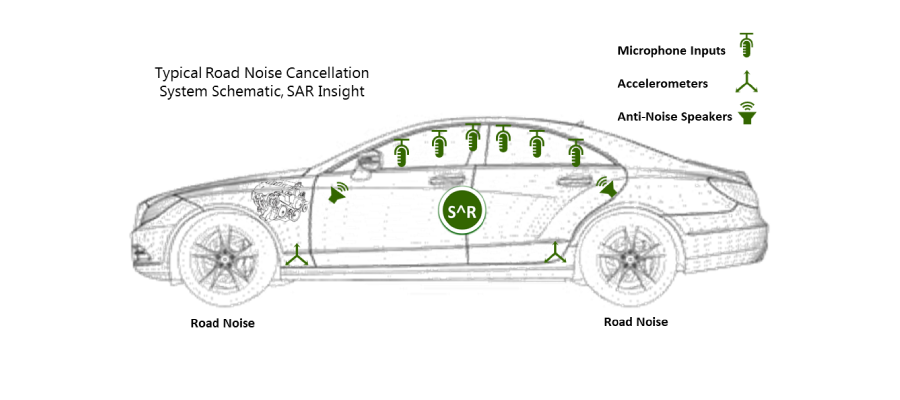
Road Noise Cancellation (RNC) technology is gaining importance in Battery Electric Vehicles (BEVs) due to the absence of engine noise, making road noise more noticeable.
RNC systems operate by strategically placing microphones inside the vehicle cabin to measure interior noise. These microphones send audio data to an audio subsystem, which generates anti-audio signals played through built-in loudspeakers. Additionally, accelerometers near the tires detect vibrations and tire noise, providing input signals used to create real-time reference waveforms that can be inverted to cancel unwanted noise.
RNC serves to reduce road noise, potentially allowing OEMs to decrease insulation materials, thus cutting costs, and reducing vehicle weight, potentially extending range. Historically, RNC has been primarily found in premium-tier vehicles, with this trend continuing, particularly in premium BEVs. Growth is anticipated in mid-tier vehicles, the largest segment by volume, contingent on significant cost reductions in the system.
SAR Insight has identified more than 25 suppliers in the Road Noise Cancellation (RNC) market, encompassing system vendors, software providers, and component manufacturers. These diverse players contribute to the evolving landscape of RNC technology. Major vendors include Analog Devices, Harman, and Molex.
Currently, over 20 vehicle models have integrated RNC systems. These vehicles predominantly belong to premium brands and represent a mix of both Internal Combustion Engine (ICE) and Battery Electric Vehicle (BEV) offerings. The presence of RNC in premium vehicles underscores its appeal in enhancing the driving experience. Major OEMs deploying RNC include BMW, Genesis, and Tesla.
In the coming years, premium-tier vehicles are anticipated to comprise the majority of RNC system shipments. As RNC system costs decrease, the medium-tier segment is poised to capture a growing share of the market. This shift reflects the increasing accessibility of RNC technology across vehicle segments.
While ICE vehicles currently outnumber BEVs in RNC adoption, the dynamics are expected to change. BEVs are projected to dominate the RNC-enabled vehicle market from 2026 onward, highlighting the technology’s critical role in electric vehicle sound management.
Typically, RNC systems incorporate four accelerometers and a varying number of microphones, typically ranging from 4 to 8. These components work in tandem to effectively mitigate road noise within the vehicle cabin.
Anticipated growth in the RNC market extends to the number of microphones and accelerometers shipped for use in these systems. By 2033, substantial expansion is expected, with a notable shift toward digital interfaces as analog interfaces are phased out. This reflects the industry’s commitment to innovation and improved noise cancellation capabilities.


